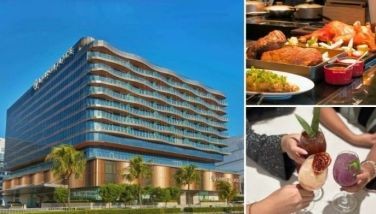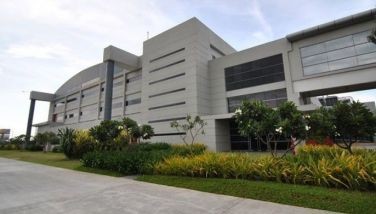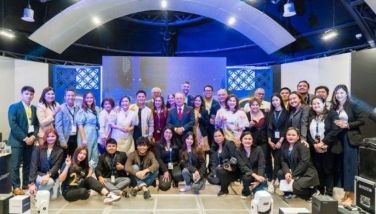The greening of Gawad Kalinga
In a Gawad Kalinga (GK) village in Bagac,
The GK Bagac Village is just one of the many picturesque communities of Gawad Kalinga with a breathtaking view of the rolling hills and the cerulean blue sea. But aside from its majestic scenery, Bagac,
With many GK villages built near mountains and coastal areas, Gawad Kalinga recognized the importance of and need to educate the people about environmental protection and teach them to live green.
At the same time, integrating the environmental component in GK communities actually means saving the poor people’s lives.
In the past, poor communities along shorelines, riverbanks and mountainsides have been vulnerable to the tides, flooding and mudslides caused by denuded forests, the degradation of the environment and changes in climate patterns.
Now, not only are residents given sturdy, concrete homes that can withstand typhoons, they will also be trained to become good stewards of the environment, to contribute in small or big ways to stop the further degradation of the environment.
Leading the charge is former environment secretary Elisea “Bebet” Gozun, a GK volunteer and 2007 Champion of the Earth who believes that saving the environment is synonymous to saving the people.
“This is really keeping up with the motto ‘Save the Poor, Save the Environment.’ The basic idea is to make sure GK communities are environmentally sustainable, malinis ang tubig, productive ang lupa at karagatan. Live in harmony with nature, don’t harm nature. Wherever they are, the only way is to take care of the environment. We want to mobilize the people to protect the environment,” Gozun tells STARweek recently at the GK1World celebration at the SM Mall of Asia.
“We want to integrate the environmental component in GK communities to make sure na maayos ang buhay ng mga tao. If we truly want to help the poor, we need to make sure that we protect the environment, that we ensure that communities will live a quality way of life. Environment is a natural capital from which all development stems,” Gozun adds.
Gawad Kalinga has launched its Green Kalinga environmental program that would take concrete steps in implementing greener practices such as the adoption of a GK site where a community-based forest management program can be started for the upland and rural poor, as well as the provision of efficient and innovative wastewater management systems, and the planting of mangroves in coastal areas. More importantly, the poor will be assisted and taught how to cultivate their land efficiently through productivity programs.
At the GK1World expo, a mini eco-village was built to show how GK residents could take up ecologically-sound practices. A typical GK house should have an alulod (gutter) to catch and collect rainwater for gardening and cleaning purposes; holes below and on the top portion of the house to allow air to come in and the
There is provision for a composting area and materials recovery facility to ensure proper solid waste management systems (segregation, recycling, composting). An interesting feature is the septic tanks with chambers and the anaerobic duffel reactor, a machine that treats solid wastes.
Gozun says GK residents can use a lot of natural and indigenous materials to treat waste.
For instance, the tambo plant (source of the walis tambo we use to sweep our homes) is very useful in treating the waste in polluted wetlands (rivers, coastal areas), as are mangroves. The tambo roots seep the dirt from rivers already polluted with garbage. There is also the state-of-the-art reef bed system that treats waste.
Gozun also takes note of the hollow blocks made from waste products that were used to pave the pathwalks of the mini-eco village. Aliron
“Instead of gravel, you use hollow blocks made from waste materials to be more eco-friendly,” she explains. Gozun says everything in the ecovillage will make use of garbage and waste that have been treated and recycled.
Meanwhile, GK communities in mountain areas would be encouraged to create agroforests, using specific types of trees suited for the area.
Gozun is excited and happy to be a part of the Green Kalinga project and hopes that by involving GK residents in caring for the environment, their lives would become more orderly and in harmony with Mother Nature.
Meanwhile, the Lasallian Institute for the Environment (LIFE), through its executive director Ben Eusebio, has committed to provide technological assistance for the application of environment management systems and designs in the GK communities using their deep base of capable engineers and student volunteers and will also plant one million trees.
The mini ecovillage and the environmental forum held at GK1World event were joint efforts of the DENR, the Lasallian LIFE, Couples for Christ’s Oikos, Aliron Philippines, Carolina’s Bamboo Farm, the Philippine Wood Producers Association, FEU Fern, UP Los Baños, Ecosan, Manila Seedling Bank, Bank of America, Bioventure, Mapecon, Clean and Green, Zero Waste Recycling Movement of the Phils, and others who provided the resources.
- Latest
- Trending



















